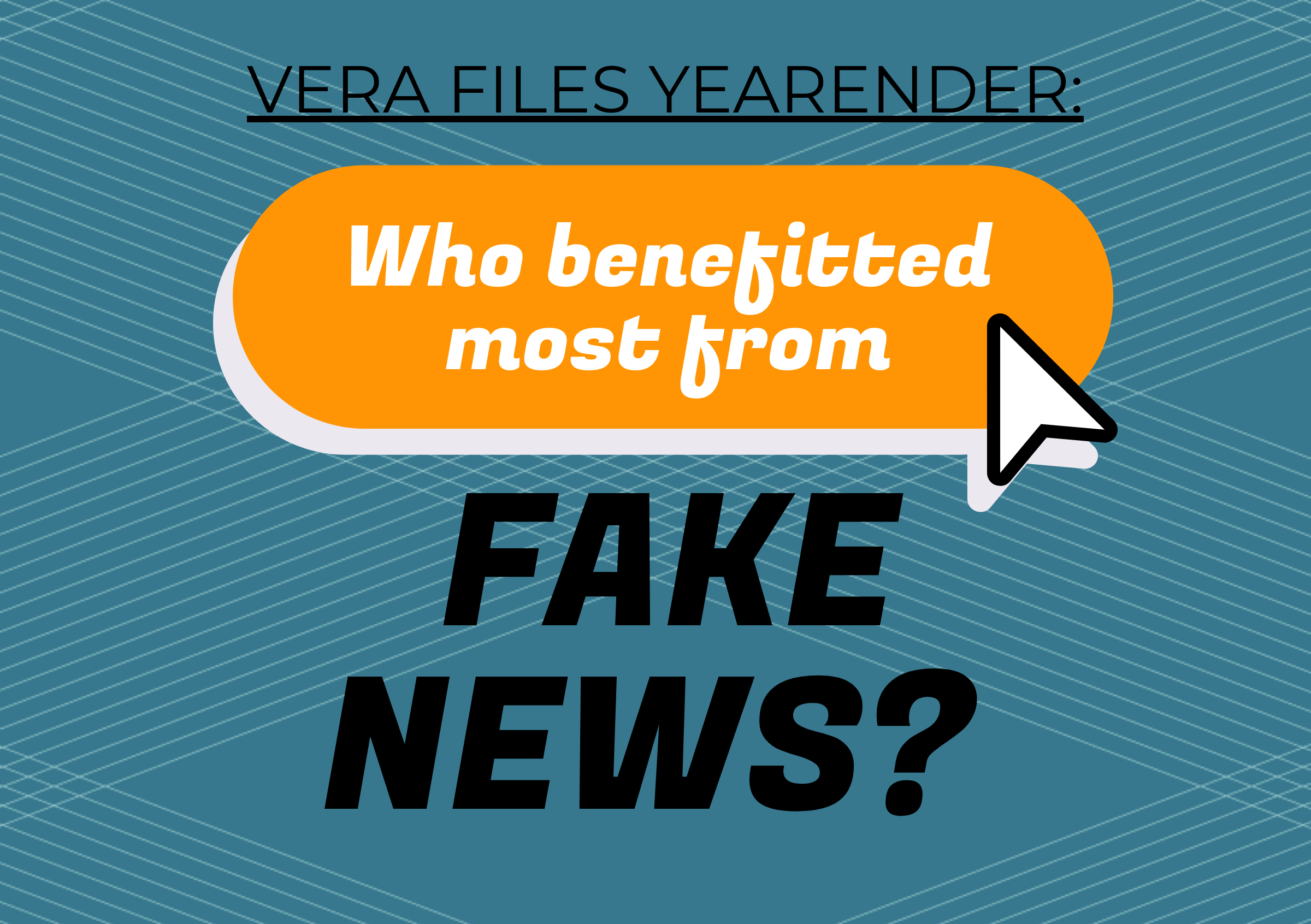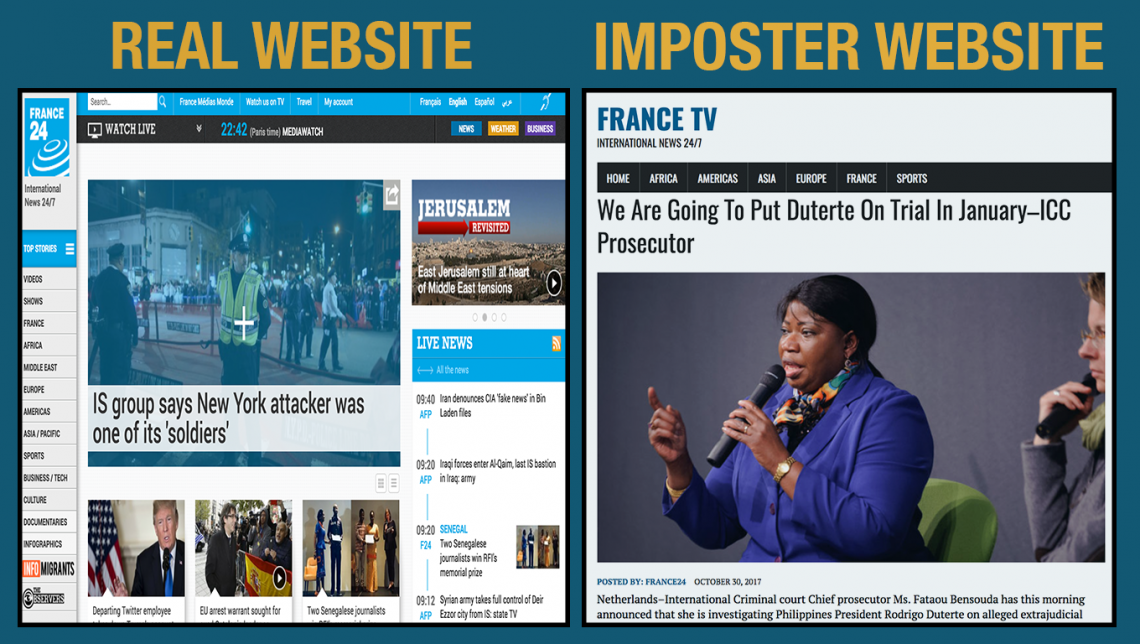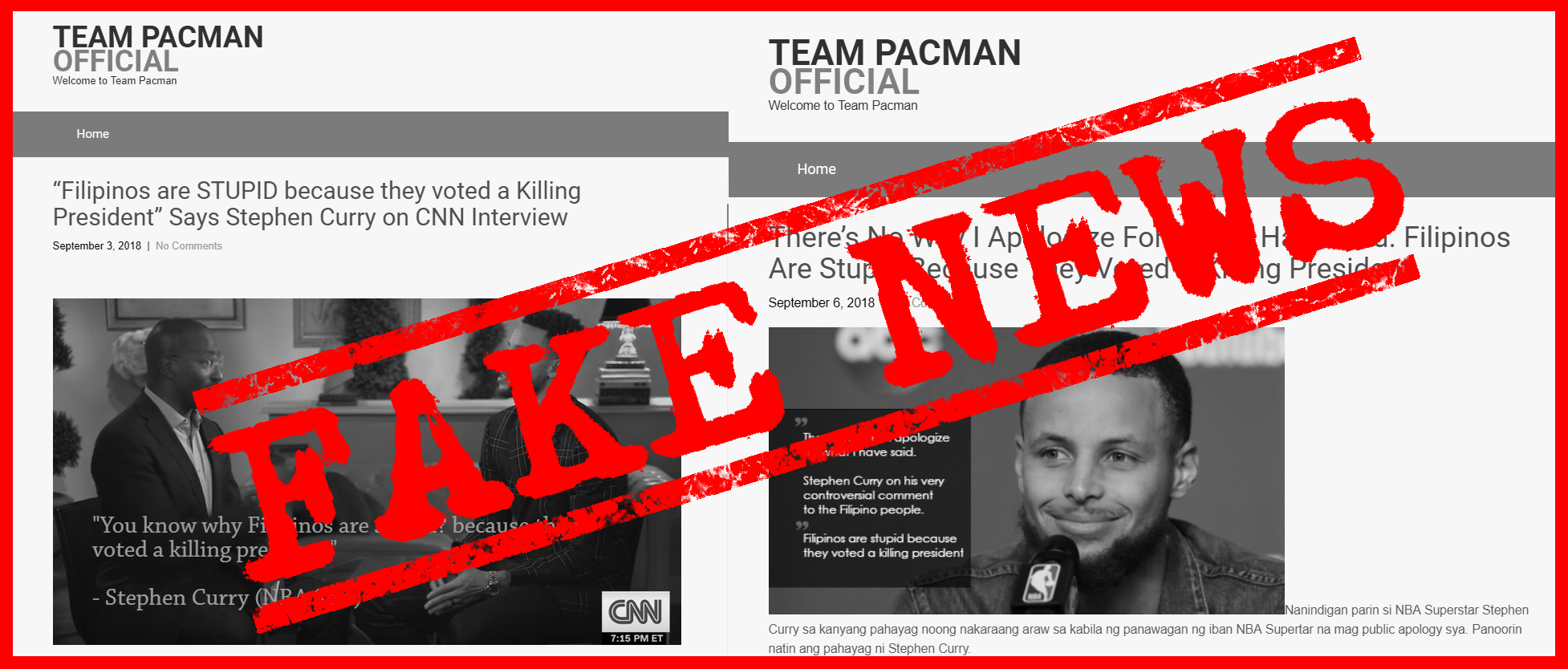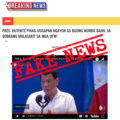“Fake news” was pretty much the news of the last months of 2017.
Mocha Uson was sued for spreading fake newspenalize fake news were filed; government agencies spread disinformation about human rights; ASEAN ministers chaired by the Philippines proposed a regional literacy program to combat fake news.
Since Aug. 26, VERA Files Fact Check has been tracking fake news weekly, using various online tools to identify the most viral fake reports, and debunking them with factual evidence.
Patterns emerge from our 16 weeks of fake news coverage to date.
1. The most shared fake news appear to benefit two people: President Rodrigo Duterte and Ferdinand “Bongbong” Marcos Jr.
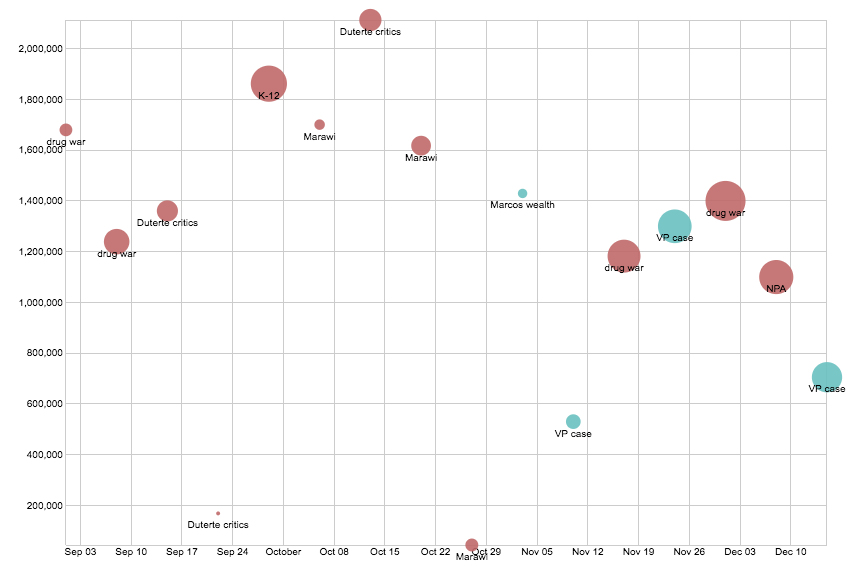
This chart shows the most viral fake news every week from end of August and the estimated number of people they reached online. The size of the circles show their peak virality, measured in the likes they generated per hour.
The 12 red circles of the total 16 prop up President Rodrigo Duterte, his policies and his administration. If not, they attack his critics.
The remaining four circles, in green, show the only other beneficiary of good fake news, former senator Ferdinand “Bongbong” Marcos Jr. or his family in general.
These pro-Marcos reports mostly falsely claim victory for him in his yet-decided poll case against Vice President Leni Robredo.
2. The most viral fake news is driven by Facebook shares and is spread by a network of pages.
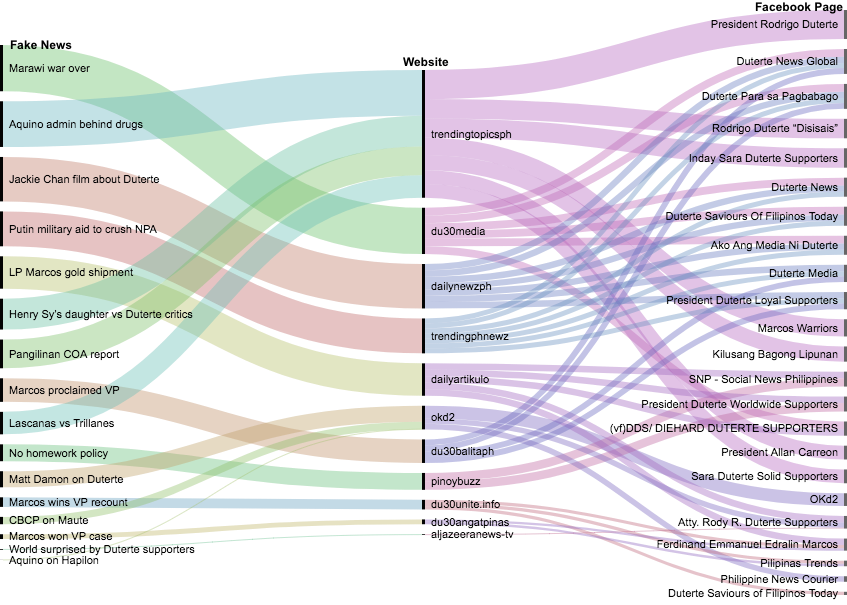
Traffic to websites containing fake news is generated by a network of Facebook pages, many carrying the name of either Duterte or Marcos.
Sen. Paolo Benigno “Bam” Aquino IV made a similar observation during a Senate hearing on fake news in October, when he released a list of 87 websites, 95 Facebook and 56 Youtube pages spreading false content.
Many accounts on the list “carry the name” of Duterte, he said. (See Aquino list shows many fake news sites bear Duterte’s name)
Presidential Communications Undersecretary Joel Sy Egco denied Malacañang’s involvement in the sites, saying it’s easy to put up a website and name it after any person.
Marcos in a separate occasion has claimed his family has been the victim of fake news for three decades, despite evidence pointing to their own fabrications. (See VERA FILES YEARENDER: Despite Marcos burial at LNMB, facts about his fake heroism remain)
The chart shows how the most viral fake news spread through the interactions of various web and Facebook pages. The thickness of the lines show how many online users were reached by the fake reports.
The fake news problem and its effects in public policy become more pressing when one recalls the January 2017 report by We Are Social and Hootsuite, which found the Philippines to rank first among countries surveyed for time spent on social media.
3. Content aggregator sites and misleading headlines, more than outright fabrications, are favored by fake news creators.
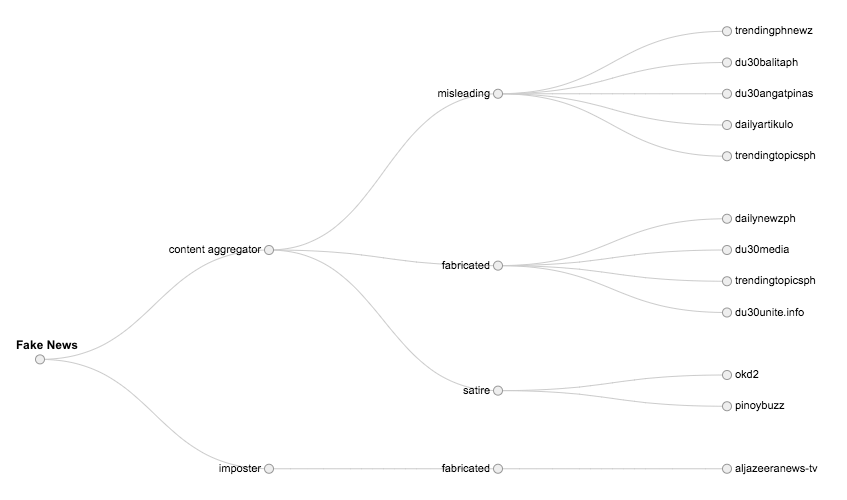
This chart shows the mis- and disinformation strategies used most by fake news creators.
Facebook pages spreading fake news lead to websites, all save for one presenting as news sources by aggregating content sourced from elsewhere.
These content aggregator sites do not show editorial information; it is unclear to readers who are behind them.
This is problematic, according to the Center for Media Freedom and Responsibility.
“A news website should be accountable for what is posted on its page, and it starts with identifying the people behind it, as well as how they can be contacted so they can be asked to explain errors posted in their sites, among others,” the watchdog group notes.
Sites that do not satisfy any journalistic criteria, it adds, “should be dismissed as a news source.”
The use of misleading headlines that do not match the content of a fake report appears to be the preferred deception strategy, more than outright fabrications and creating imposter websites of real media outfits.
Tagging fake news as satire but spreading them as if they were real news is also another strategy.
These strategies make sense when considered alongside the provision of free Facebook services in the country, where users get to see only post titles but are not able to view the content unless they pay data charges.
These sites are still active, as of Dec. 12:
- trendingphnewz
- dailynewzph
- du30balitaph
- okd2
- dailyartikulo
These sites are no longer accessible:
- du30angatpinas
- trendingtopicsph
- du30media
- pinoybuzz
- aljazeeranews-tv
- du30unite
(Guided by the code of principles of the International Fact-Checking Network at Poynter, VERA Files tracks the false claims, flip-flops, misleading statements of public officials and figures, and debunks them with factual evidence. Find out more about this initiative.)

